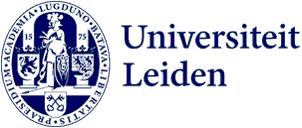
News but nothing new: many pesticides in Dutch swimming and natural waters
There has been a lot of media attention for the report recently completed by the Institute of Environmental Sciences (CML) from Leiden University. However, it has long been known that Dutch surface water contains too many toxic pesticides. ‘We will have to improve our ways of life together with many sectors in the Netherlands,’ responded outgoing Minister Harbers. A crisis similar to the one with nitrogen is looming.
The Institute of Environmental Sciences, commissioned by Natuur & Milieu, investigated the presence of the 38 most toxic chemical pesticides in the surface water of 153 natural and recreational areas in the Netherlands (see the map below). In the period from 2014 to 2021, they found such substances in 80 percent of these areas. In 40 percent of them, the levels exceeded environmental standards, sometimes up to a hundred times. Exceeding these standards indicates a real risk to the aquatic life present.

Risky, but necessary
The study concerns substances that the European Union describes as Candidates for Substitution (CfS). This essentially means they pose a risk, but agriculture needs them, so we will only replace them when a viable alternative is available. Ecologist Marco Visser, who led the study, said: ‘Substances on this list may be carcinogenic or disrupt reproduction.’ It is also known that some of these substances can affect soil organisms. The latter may not seem so urgent, but organisms like fungi and worms are a crucial foundation for healthy ecosystems and food production.
Visser: ‘Since 2014, there has been a general improvement in water quality when looking at the combined toxicity of all measured pesticides. However, there seems to be little improvement when specifically looking at CfS substances.’ Visser and colleagues write in the report that their results align with previous reports that also show no clear downward trend in the likelihood of exceeding standards between 2014 and 2021. It is also not a big surprise to keep finding these pesticides, as their use has not been systematically reduced.
No later than 2027, water must comply, or else...
This runs counter to the goal set by the Dutch government in 2013: a 90 percent reduction in the exceedance of environmental standards for surface water by 2023. By 2027, all EU countries must meet the goals of the European Water Framework Directive. The important government advisory body, the Council for the Environment and Infrastructure (Rli), warned last May that the goals will not be achieved with current policies. This could have consequences for economic activities after 2027, similar to what was seen in the Dutch nitrogen crisis.
'There is no choice at all'
The platform Binnenlands Bestuur asked outgoing Minister Mark Harbers (Infrastructure and Water Management) for a response. He said the government must do ‘everything possible’ to achieve the water goals. ‘Not only to prevent the Netherlands from coming to a standstill but also to ensure an adequate supply of fresh drinking water. So there is no choice but to achieve this.’ The Minister acknowledges that it's ‘complicated.’ He says, ‘We will have to improve our ways of life in many sectors in the Netherlands.’
Rules for pesticides and water quality don't match
While the Netherlands is indeed a delta where many rivers converge, the country contributes more than 50 percent of the pollution according to Harbers. He particularly finds the lenient approval of certain pesticides problematic, as the rules for them allow more than those for water quality. Harbers wants these two systems to align and is working towards this with the European Commission. The ministry is currently working on an ‘impulse program’ to improve water quality more quickly. According to Harbers, this program will be launched ‘within a month or so.’
Text: Rianne Lindhout
Photo: Michiel Verbeek
